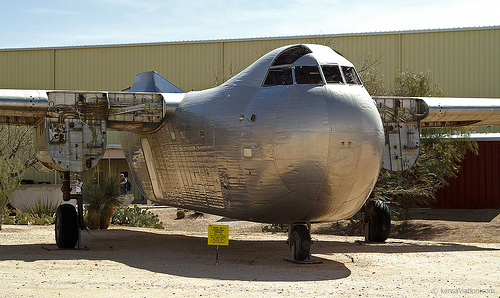|
Early in World War II, a shortage of
aluminum was predicted and alternative material for aircraft
manufacture were investigated. The Budd Conestoga was
designed around welded stainless steel stressed-skin construction.
The upswept tail incorporated a ramp
to a 8ft high and 8ft wide cargo space. As the flight deck was
placed high above the nose, these height and width dimensions were
maintained over a length of 25ft.
|
|
In addition to cargo, the Conestoga
could carry 24 fully armed paratroopers and equipment or 24
stretchers and 16 sitting patients.
The prototype first flew on 31
October 1943. Production delays, cost overruns and the lack of
an aluminum shortage led to a cancelled USAAF contract and a limited
US Navy production run of 17 aircraft. Fourteen of these
aircraft were purchased by National Skyway Freight, later known as
the Flying Tiger Line.
|






